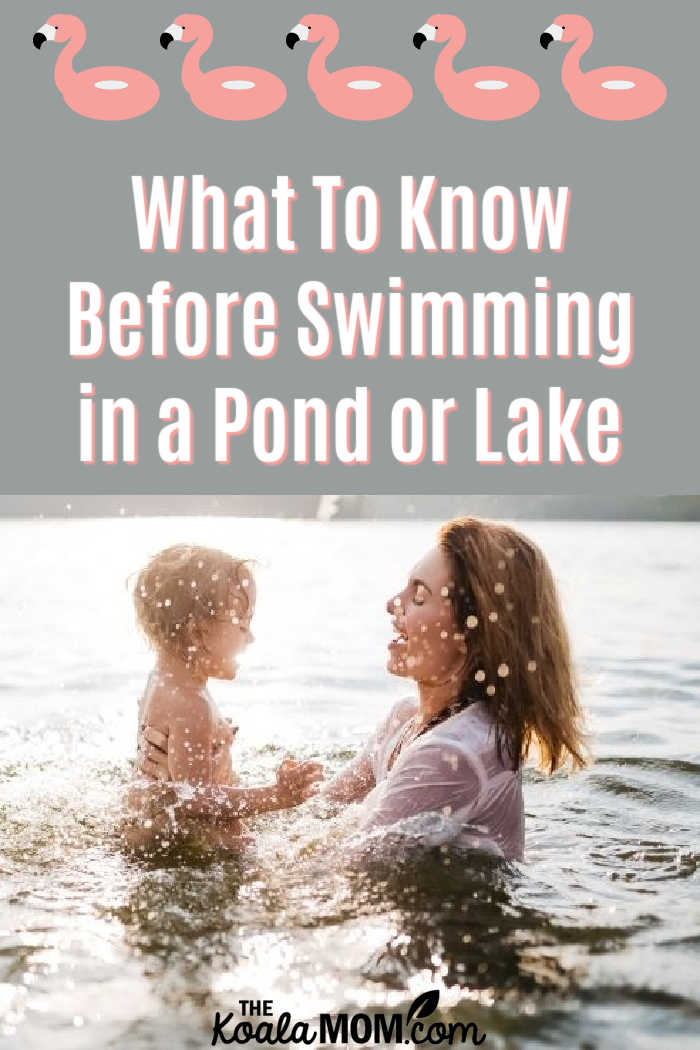Summer is here, and it’s the perfect time to go swimming with your children. Swimming isn’t just a fun activity for the whole family—it’s an excellent way to socialize with other kids and get a great workout in the process.
While most people flock to the local pool or beach, there are plenty of other bodies of water for you and yours to enjoy. Lakes and ponds are safe for swimming, although there are certain concerns and hazards you should be aware of before taking a dive. Check out this helpful guide on what to know before swimming in a pond or lake.

Check Water Conditions
Pools require chemicals and regular cleaning to limit the risk of infections or other waterborne diseases. Natural bodies of water don’t have these protective measures, so checking the water condition before entering is essential! Some watering holes have signs that tell you if it’s safe to swim, so check the surrounding areas upon arrival. For example, some local lakes here in Vancouver have e. coli warnings posted at various times in the summer.
Additionally, check for an overabundance of algae, film, and bugs—this almost always indicates that the water quality is poor and not suitable for your children. Another red flag to be aware of is if the pond or lake is nearby a pasture or farm. Waste from these places can runoff into the water, breeding very nasty illnesses. As a precaution, always use nose and ear plugs when swimming in a lake or pond, even if the water quality is suitable.
Never Dive In
Most pools prohibit diving as it can cause injuries when done improperly. This rule remains true for any body of water, including ponds and lakes. It’s much harder to gauge how deep a natural waterhole is and if there are many rocks or hazards below the surface.
Instead of diving in headfirst, slowly step into the lake or pond. Once you have a better idea of the depth and objects on the floor, you can safely invite your children to join you.
Read my tips for swimming with babies and toddlers.
Be Aware of Currents and Undertow
Oceans aren’t the only bodies of water that have aggressive currents and undertows. In fact, many people tragically lose their lives when swimming in lakes because the current is too powerful. Research whether your specific watering hole has dangerous currents or strong undertows before taking a dip.
Pay attention to weather conditions, which can contribute to rougher water speeds. Additionally, never allow inexperienced swimmers to venture too far from the shore—the safest option is to swim next to your child the entire time.
Do not rely on flotation devices to keep kids safe on the water, either. Children who cannot swim should be wearing proper PFDs. Children playing on floating toys such as inner tubes, mattresses, or unicorns should be kept under close supervision. It’s easy for the current or the wind to push a floatie away from shore without kids noticing that they are suddenly in water over their heads.
Taking a dip is the best way to spend a summer day, and sometimes the best option for you and your family isn’t a pool or ocean. This guide on what to know before swimming in a pond or lake shouldn’t frighten you away from the water! Instead, use it to ensure a safe and enjoyable day with the whole family. Nature swimming is one of the best outdoor adventures to do this year, so be aware and have some fun!
Our favourite lakes and ponds to swim in around the lower mainland include:
- Alouette Lake in Golden Ears Provincial Park
- Cultus Lake, BC
- Chilliwack Lake
- White Pine Beach on Sasamat Lake
- Buntzen Lake Recreation Area

No Responses Yet